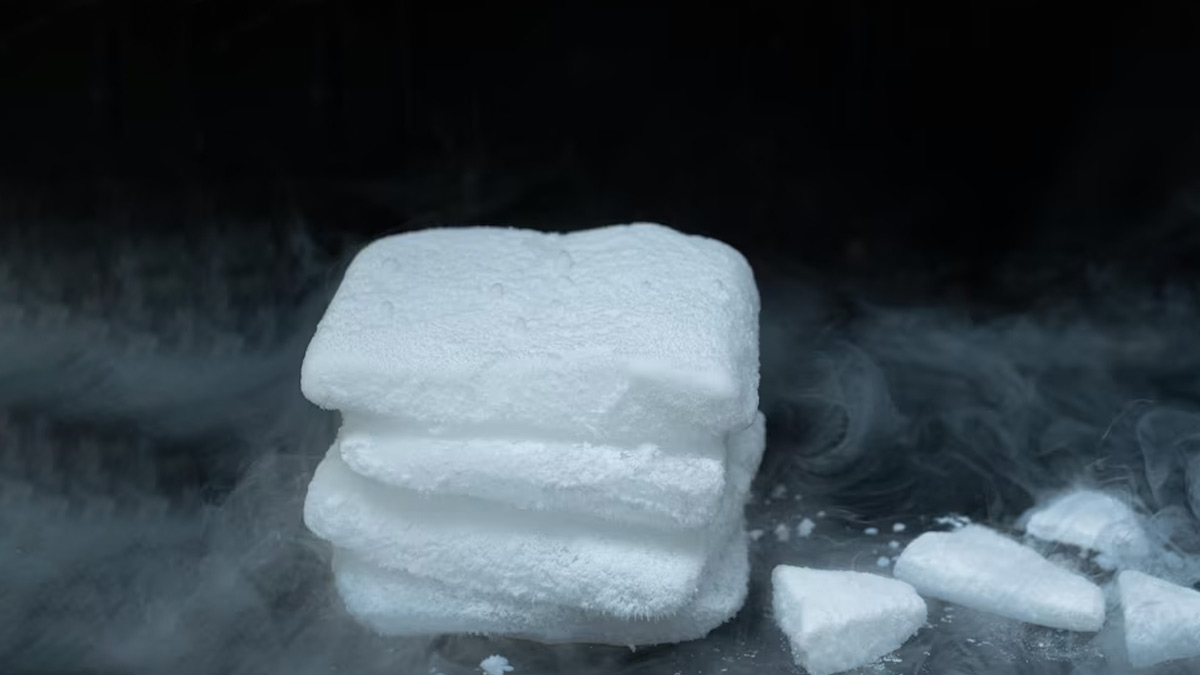
Gurugram Restaurant Mishap: Why Did Diners Fall Ill After Consuming Dry Ice?
In a recent alarming incident, dry ice was mistakenly served to a group of diners at a restaurant in Gurugram, India, instead of mouth freshener, leading to severe health consequences, including vomiting blood.
The incident unfolded when Ankit Kumar, accompanied by his wife Neha Sabarwal, Manik Goinka with his wife Preetika, and Deepak Arora with his wife Himani, visited the restaurant in Gurugram. According to ANI, Ankit reported to the police that after consuming their meals, the restaurant staff offered them mouth fresheners, which swiftly led to a rapid deterioration in their health.
A waitress was booked on charges of criminal conspiracy and causing damage by poisoning after a group of customers suffered mouth burns from dry ice that was served to them as mouth fresheners at a restaurant in Sector 90.#Gurugram#LaForesttaCafe#RestaurantIncident… pic.twitter.com/vKSrr8GCam
— Neha Bisht (@neha_bisht12) March 5, 2024
Dry ice is classified as a hazardous substance by the Food Safety and Standards Authority of India (FSSAI). Even the United States Food and Drug Administration (FDA) and the Centers for Disease Control and Prevention (CDC) caution against handling dry ice without proper precautions. The CDC website advises wearing gloves specifically designed for very cold temperatures and safety goggles when handling dry ice.
What is dry ice?
Dry ice is solid carbon dioxide at extremely low temperatures, around -78.5 degrees Celsius (-109.3 degrees Fahrenheit). “Because of its sublimation characteristic, which allows it to transition directly from a solid to a gas without passing through a liquid phase like regular ice, dry ice is commonly utilised for freezing and cooling purposes,” said Dr Vishal Gupta, senior consultant physician, Fortis Hospital, Noida.
1
2
3
4

What are the health risks?
According to Dr Vishal Gupta, a senior consultant physician at Fortis Hospital, restaurants and bars often utilise dry ice for its dramatic vapour emission during the serving of certain dishes and for its cooling abilities.
Although dry ice is effective for cooling, it's essential to observe safety protocols. Improper handling can result in respiratory problems or skin injuries due to the release of carbon dioxide gas and extremely low temperatures.
Dr Gupta warns that the low temperature of dry ice can cause frostbite or cold burns upon direct contact with the skin.
Don't Miss: Under-50s And Cancer: Experts Share Insights On The Growing Trend
Regarding health (Expert Shares Healthy Alternatives To Unhealthy Cravings During Pregnancy) impacts, the primary concern associated with dry ice is the release of carbon dioxide gas. Dr Vishal Gupta, explains, "When dry ice sublimates, it transforms into carbon dioxide, which can displace oxygen in enclosed spaces. In areas lacking proper ventilation, the accumulation of carbon dioxide may lead to oxygen deprivation, posing a risk of asphyxiation."
Dr Gupta highlighted a significant risk associated with attempting to create a "smoke" effect using dry ice, wherein individuals place a small piece of dry ice in their mouths to exhale a puff of smoke (Breast Cancer To Blood Clots: 5 Reasons Why Women Should Quit Smoking). "While this demonstration is sometimes conducted by professional entertainers and educators," Dr Gupta cautioned, "there is a genuine danger of inadvertently swallowing the dry ice fragment."
Don't Miss: 7 Regular Kitchen Foods That Help Prevent Fatty Liver
Precautions
Dr Vikas Gupta emphasised the importance of conscientious handling practices, comprehensive protective measures, and ensuring adequate ventilation when utilising or storing dry ice indoors.
Stay tuned to HerZindagi for more such content.
1
2
3
4